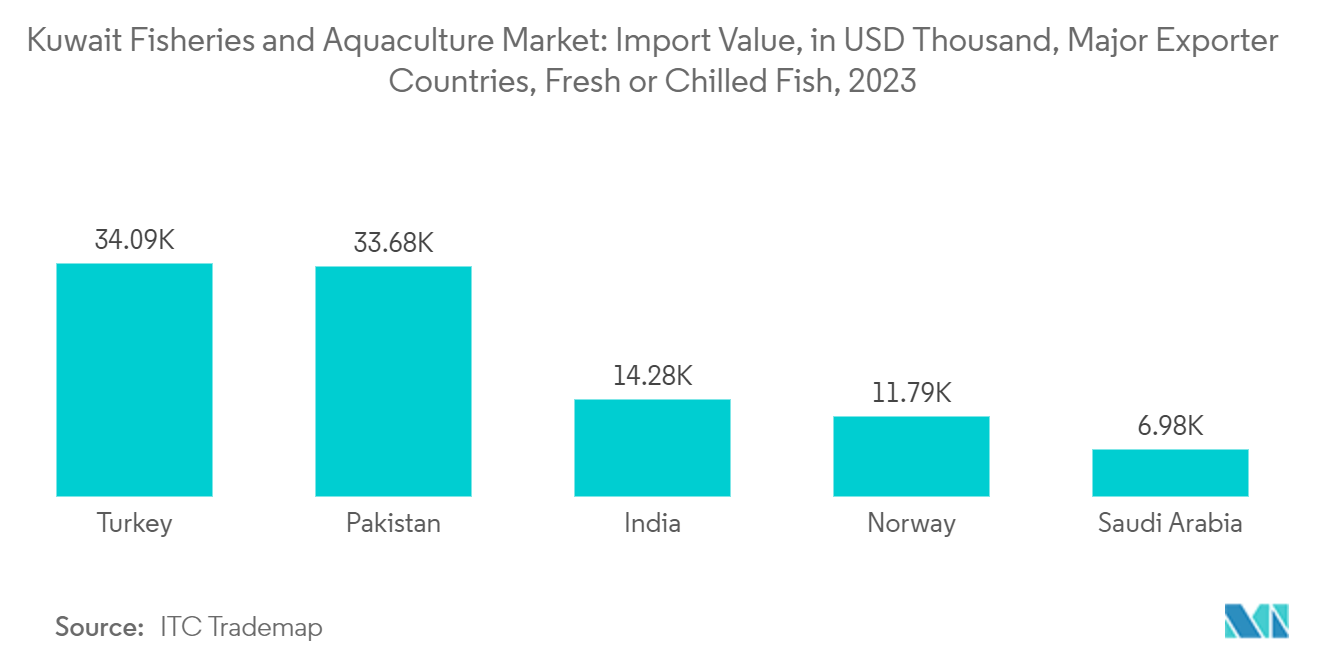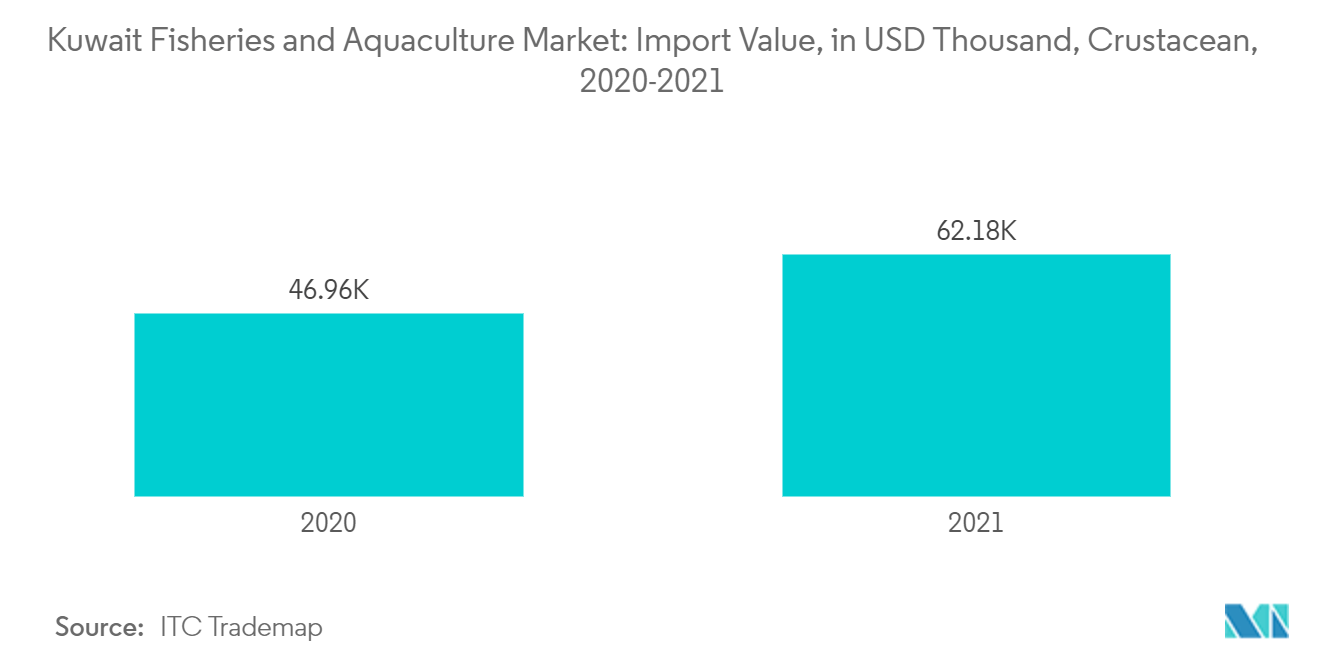Market Trends of Kuwait Fisheries And Aquaculture Industry
Increasing Seafood Consumption Fuels Market Growth
Seafood is an excellent source of lean, high-quality, easily digested protein. Seafood is low in saturated fat and sodium and is a rich source of many essential vitamins and minerals. Seafood is also one of the few foods that contain long-chain omega-3 fatty acids, which have many beneficial health effects and are necessary for developing the nervous system and retina. Seafood includes fish such as catfish, salmon, tuna, trout, and tilapia, and shellfish such as shrimp, crab, clams, and oysters, mainly Nila Tilapia fish becoming popular in the parts of the country. Based on consumer health awareness of seafood and dietary, the aquaculture market is anticipated to grow in the coming years.
Demand for fresh fish and shrimp in Kuwait is expected to exceed the sustainable potential of its fishery resources. The Public Authority for Agricultural Affairs and Fish Resources (PAAFR) Kuwait has created a development plan to achieve locally consumed fish self-sufficiency and narrow the gap between seafood product supply and demand. According to ITC Trademap, the import of fresh and chilled fish accounted for USD 142,081 thousand in 2021, higher than USD 119,474 thousand in 2019.
Additionally, the organization projects that fish farming could fill 50.0% of the fresh fish deficit by 2026 if the PAAF completes implementing all its planned projects. Despite the higher price, the increasing demand for fish and seafood is projected to increase consumption in Kuwait during the forecast period, mainly driven by the government's focus on developing the aquaculture industry to reduce import dependency.

Rising Seafood Import in the Country
Kuwait's "Blue Economy" project seeks to transition the nation from its heavy reliance on oil revenues, which constitute 80% of its GDP, to focus on marine and maritime ventures. This initiative's key focus is pinpointing the primary causes behind the dwindling fish stocks. Data from the Kuwaiti Central Statistical Office and the State Authority of Agriculture Affairs and Fish Resources (PAAFR) reveal a concerning 30% decline in fish stocks within Kuwaiti waters, pushing the nation towards increased import reliance. Additionally, while local shrimp catches have lagged behind pre-invasion levels, a surge in domestic demand has led to heightened imports and escalating prices.
Data from ITC Trademap indicates that in 2021, Kuwait's fish imports reached 121 million metric tons, underscoring the nation's struggle to satiate its domestic appetite. This rising import trend is poised to support market growth in the coming years. As awareness of the health benefits of fish consumption grows, Kuwait's demand has surged, outpacing local supply. Consequently, vendors increasingly turn to international sources for frozen and fresh fish. ITC Trademap data highlights that in 2021, India, Pakistan, and Turkey emerged as Kuwait's primary fish suppliers, with India accounting for 22% of imports (valued at USD 51 million) and Pakistan closely following at 20% (USD 47 million). Therefore, increasing government initiatives to invest in farmland, coupled with rising imports of fisheries and aquaculture, is expected to boost the sales of seafood in the review period.


